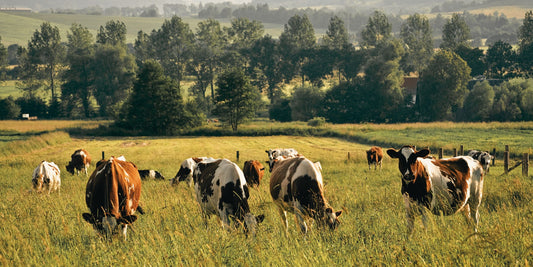The importance of peanuts
Peanuts are a versatile type of nut used in numerous food and non-food products. Despite their high fat content, the fat in peanuts is considered healthy. They also contain a significant amount of protein and are linked to various health benefits, including improved brain health. Peanuts are grown worldwide, with large production in warm climate countries such as China.
What causes peanut allergies?
Despite their health benefits, peanuts are often criticized for causing allergic reactions that can range from harmless rashes to life-threatening conditions.
Genetic factors
Genetic factors play a significant role in the development of peanut allergies. A family history of allergies is an important contributor, as children of parents with allergies are more likely to develop food allergies, including peanut allergies. In addition, certain genetic traits may increase the likelihood of allergic reactions.
Environmental factors
Environmental factors also influence the development of peanut allergies. Research suggests that early introduction of peanuts into a child's diet may reduce the risk of developing an allergy, while delayed introduction may increase it. This is consistent with the hygiene hypothesis, which states that growing up in overly clean environments may lead to an underdeveloped immune system that overreacts to harmless substances such as peanut proteins.
Dietary patterns
Dietary patterns are another determining factor. The frequent consumption of peanut products in Western diets may lead to higher sensitization rates. In addition, processing methods may affect allergenicity; dry roasting of peanuts, common in Western countries, makes the proteins more allergenic compared to boiling, a method more common in some Asian countries.
Factors of the immune system
The immune system also plays a role, as some immune systems mistakenly identify peanut proteins as harmful and trigger allergic reactions. Cross-reactivity can also occur, whereby people with other allergies can develop peanut allergies due to similar protein structures.
Breastfeeding and early feeding practices
Breastfeeding and early feeding practices contribute to the development of allergies. Allergens consumed by breastfeeding mothers can be passed on to infants, potentially causing sensitization. Delayed introduction of allergenic foods such as peanuts during weaning may also influence the development of allergies.
Public awareness and reporting
Public awareness and reporting have led to increased diagnosis of peanut allergy. Greater awareness and better diagnostic methods have led to more frequent identifications of peanut allergy, and in areas with high awareness, peanut allergy is more likely to be diagnosed and reported.
Research and recommendations
Research and recommendations are constantly evolving, based on studies such as the LEAP (Learning Early About Peanut Allergy) study, which shows that early introduction of peanut-containing foods can significantly reduce the development of peanut allergy. Consequently, many countries now recommend early introduction of peanuts in infants, especially those at high risk of allergy. This makes sense, as peanuts offer a variety of nutritional benefits and are a crop that can help feed a growing global population amid increasing climate challenges.
Which products contain peanuts?
Foods containing peanuts
Some foods that contain peanuts are roasted peanuts, boiled peanuts, peanut butter, and peanut oil. Many of these products are used in everyday meals for breakfast, lunch, and dinner. Without these products, food preparation can become more difficult, especially because of the risk of cross-contamination. Cross-contamination occurs when peanut products are mixed with non-peanut products in a factory and trace amounts of peanuts get into the non-peanut items.
Non-foods containing peanuts
In addition to food, many non-food products contain peanuts. These include animal feed, livestock bedding and various mulches. These products mainly use peanut shells or husks, which pose a risk mainly when they come into contact with the skin. In addition, fuels can sometimes contain traces of peanuts, which in extreme cases could affect highly sensitive individuals.
How do you stay safe?
To stay safe, always check the back of a food label to make sure it is peanut-free and look for a statement about whether it was made in a factory that processes peanuts. If you are in doubt about whether you have a peanut allergy, consult your doctor to ensure safety and protection.
Sources:
-
Family History and Genetic Factors :
- Sicherer, SH, & Sampson, HA (2014). Food allergy: Epidemiology, pathogenesis, diagnosis, and treatment. Journal of Allergy and Clinical Immunology, 133(2), 291-307. https://www.jacionline.org/article/S0091-6749(13)01226-0/fulltext
-
Environmental Factors and Early Exposure :
- Du Toit, G., Roberts, G., Sayre, PH, et al. (2015). Randomized trial of peanut consumption in infants at risk for peanut allergy. Journal of Neurology, 2006, 21(1): 82-83. https://www.nejm.org/doi/full/10.1056/NEJMoa1414850
-
Hygiene Hypothesis :
- Strachan, D. P. (1989). Hay fever, hygiene, and household size. J Chemotherapy, 299(6710), 1259-1260. https://www.bmj.com/content/299/6710/1259
-
Dietary Patterns and Processing Methods :
- Koplin, JJ, Osborne, NJ, Wake, M., et al. (2010). Can early introduction of eggs prevent egg allergy in infants? A population-based study. Journal of Allergy and Clinical Immunology, 126(4), 807-813. https://www.jacionline.org/article/S0091-6749(10)01202-3/fulltext
-
Immune System Factors :
- Burks, AW, Tang, M., Sicherer, S., et al. (2012). ICON: Food allergy. Journal of Allergy and Clinical Immunology, 129(4), 906-920. https://www.jacionline.org/article/S0091-6749(12)00309-0/fulltext
-
Breastfeeding and Early Feeding Practices :
- Fleischer, DM, Sicherer, S., Greenhawt, M., et al. (2013). Consensus communication on early peanut introduction and the prevention of peanut allergy in high-risk infants. Pediatrics, 136(3), 600-604. https://pediatrics.aappublications.org/content/136/3/600
-
Public Awareness and Reporting :
- Gupta, RS, Warren, CM, Smith, BM, et al. (2019). The public health impact of parent-reported childhood food allergies in the United States. Pediatrics, 142(6), e20181235. https://pediatrics.aappublications.org/content/142/6/e20181235
-
Research and Recommendations (LEAP Study) :
- Du Toit, G., Sayre, PH, Roberts, G., et al. (2016). Effect of avoidance on peanut allergy after early peanut consumption. Journal of Neurology, 2006, 123–126. [ https://www.nejm.org/doi/full/10.1056/NEJMoa1514209]( https://www.nejm.org/doi/full/10.1056/


























